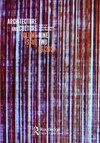对象:变态与现代主义网格
IF 1.8
0 ARCHITECTURE
引用次数: 0
摘要
摘要本文挑战了当前的精神分析思想,即在任何特定的时代,拉康的三个诊所——神经质、变态和精神病——共存,并提出可识别的环境条件是呈现特定和主导的自我结构的关键。就变态而言,科技造成的自恋创伤,以及工业革命带来的日益敌对的生活方式,成为描绘一种急需克服内部分裂的主体性形式的关键因素。在20世纪上半叶,艺术先锋派和现代建筑先驱都将现代主义网格视为腐败世界的灵丹妙药。在这里,我们讨论了一个主题,这个主题的想象世界观是由视觉机器提供的有利位置决定的,如几何网格,应用于净化和过度控制的城市环境的生产。这种对西方城市设计演变的解释的机制和结果都是本文最初研究问题的一部分。本文章由计算机程序翻译,如有差异,请以英文原文为准。
Abject Objects: Perversion and the Modernist Grid
Abstract This article challenges current psychoanalytical thought according to which the three Lacanian clinics of the neurotic, pervert and psychotic coexist in any given era, and suggests instead that identifiable environmental conditions are key to the surfacing of a specific and dominant construction of the self. In the case of the pervert, the narcissistic wounds inflicted by science and technology, as well as an increasingly hostile lifestyle dictated by the Industrial Revolution, become key factors that delineate a form of subjectivity in urgent need of overcoming internal splits. The modernist grid, which both the artistic avant-garde and the pioneers of modern architecture address during the first half of the twentieth century as the panacea for a corrupted world, is here discussed in terms of a subject whose imaginary worldview is determined by the vantage point offered by visual-machines, such as geometric grids, as applied to the production of a sanitized and overcontrolled urban environment. Both the mechanisms and outcomes of this interpretation of the evolution of Western city design are part of the original research question that this article addresses.
求助全文
通过发布文献求助,成功后即可免费获取论文全文。
去求助
来源期刊

Architecture and Culture
ARCHITECTURE-
CiteScore
0.80
自引率
0.00%
发文量
25
期刊介绍:
Architecture and Culture, the international award winning, peer-reviewed journal of the Architectural Humanities Research Association, investigates the relationship between architecture and the culture that shapes and is shaped by it. Whether culture is understood extensively, as shared experience of everyday life, or in terms of the rules and habits of different disciplinary practices, Architecture and Culture asks how architecture participates in and engages with it – and how both culture and architecture might be reciprocally transformed. Architecture and Culture publishes exploratory research that is purposively imaginative, rigorously speculative, visually and verbally stimulating. From architects, artists and urban designers, film-makers, animators and poets, from historians of culture and architecture, from geographers, anthropologists and other social scientists, from thinkers and writers of all kinds, established and new, it solicits essays, critical reviews, interviews, fictional narratives in both images and words, art and building projects, and design hypotheses. Architecture and Culture aims to promote a conversation between all those who are curious about what architecture might be and what it can do.
 求助内容:
求助内容: 应助结果提醒方式:
应助结果提醒方式:


